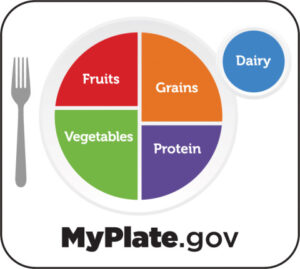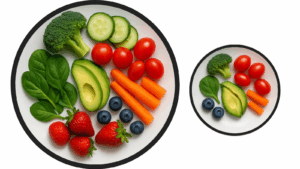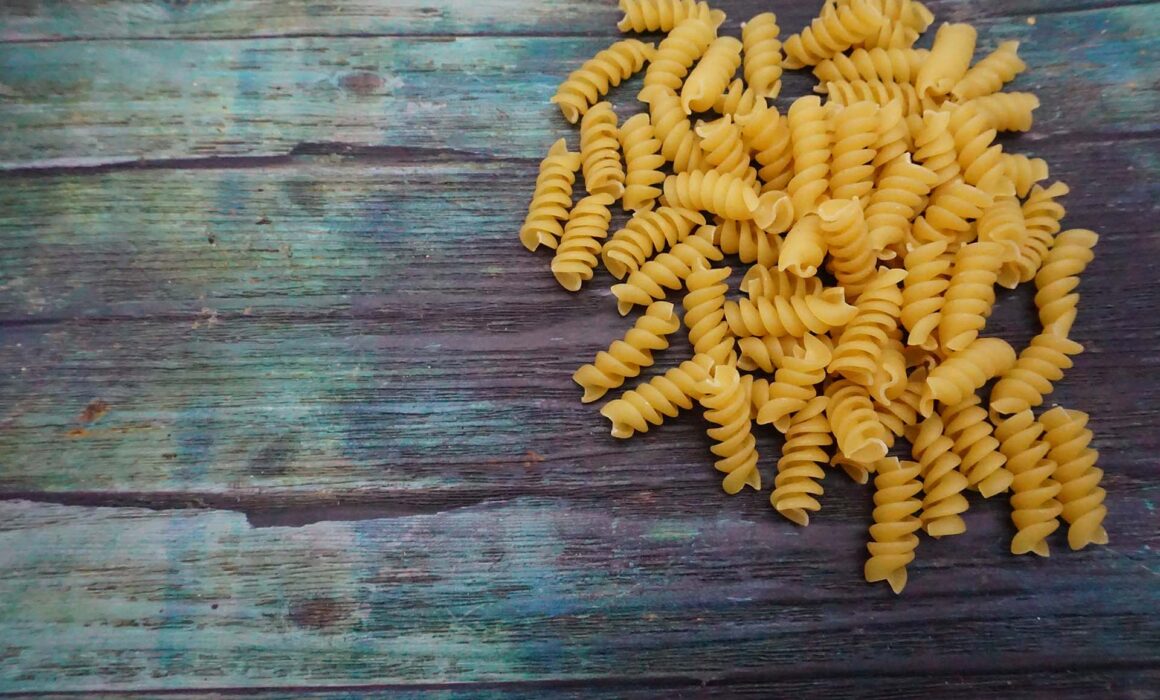All About Portions
Eat Smart, Not Just Healthy
Eating healthy is important, but portion control is just as crucial. Even the best foods can lead to weight gain if you eat too much. Planning a balanced diet is one thing – knowing the right amount to put on your plate is another. By learning what proper portions look like and using The MyPlate guidelines, you can make smarter choices, avoid overeating, and feel confident in your meals.
This guide will show you simple, practical tips to master portion sizes and eat mindfully every day.
What’s a portion, and why does it matter?
How much food you eat affects your calorie intake and therefore weight loss or gain. Two terms are important to know:
- Serving size is the amount of food listed on a Nutrition Facts label. It’s a guide for how much people usually eat and helps you compare foods.
- Portion size is how much food you actually choose to eat. This can be more, less, or the same as the serving size.
Calorie needs depend on age, body size, sex, and activity level. As a general guide, many adult men need about 2,200 to 3,000 calories per day, while adult women need about 1,600 to 2,400 calories per day. Your personal needs may be higher or lower. A more precise estimate comes from calculating your Total Daily Energy Expenditure (TDEE), which factors in height, weight, age, and activity. Health conditions and medications can also change energy needs.
Making positive changes like eating more fruits and vegetables helps increase fiber, vitamins, and minerals, while often lowering calorie density. But if your portions are too big, it’s still easy to overeat.
Does “everything in moderation” work?
Not always in equal amounts. A moderate portion of one food might be too much of another. The MyPlate guidelines (from the USDA) show how to balance food groups so you get the nutrients you need.

What does a portion look like?
The best way to check if you’re eating the right amount is to use inexpensive digital kitchen scales and measuring cups. That’s the most accurate way to measure serving sizes. Over time, you’ll get familiar with how healthy portions look on your plate.
Here are general daily targets for adults based on a 2,000–2,500 calorie diet (adjust if your needs are higher or lower):
- Vegetables: 2½ to 4 cups
- Fruits: 2 cups
- Grains: 6 ounce-equivalents (at least half whole grains)
- Dairy (or fortified alternatives): 3 cups
- Protein foods: 5½ ounce-equivalents (meat, poultry, seafood, eggs, beans, nuts, seeds)
Top tips for portion control

- Learn how to read Nutrition Facts labels for serving size and calories.
- Be mindful when cooking avoid snacking on ingredients.
- Use measuring cups, spoons, or a food scale for accuracy, especially at first.
- Avoid doubling up on carbs (like bread and rice); pick one or reduce the portion of each.
- Use a smaller plate to make portions look fuller.
- At restaurants, watch out for buffets or oversized portions.
- Skip second helpings until you pause to check if you’re full.
- Serve all food at once, leftovers can be stored for later instead of eaten right away.
Take Control of Your Portions Today!
Start putting what you’ve learned into practice. Use a food scale, measuring cups, or your plate as a guide to serve the right portions at every meal. Track your meals, make small swaps, and aim for a balanced plate using The MyPlate guidelines.
Your health is worth it – start today and see how mindful eating and proper portion control can help you feel fuller, eat smarter, and reach your wellness goals.
Tip: Take a photo of your plate before each meal for a week, it’s a simple way to stay accountable and notice patterns in your eating.
